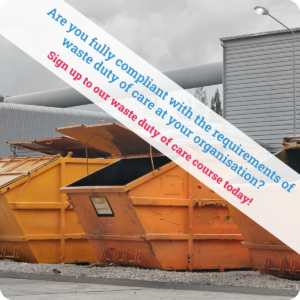Over years of helping many organisations across a range of different sectors with their aspects registers we have found there are common questions that crop up which the majority of clients tend to struggle with.
The ISO 14001:2015 Standard (‘the Standard’) defines an environmental aspect as the following:
‘An element of an organisation’s activities or products or services that interacts or can interact with the environment’.
So environmental aspects are all the things that you do in carrying out your activities and services that can affect the environment in some way, either positively or negatively, for example:
- using electricity to power IT equipment;
- producing waste water during a manufacturing process;
- creating a noise nuisance from transport activities; or
- creating a wildlife area on site.
The Standard asks you to identify the environmental impacts associated with your aspects. It defines impacts as:
‘change to the environment, whether adverse or beneficial, resulting from an organisation’s environmental aspects.’
If an impact is the effect or the result on the environment from an environmental aspect, we can therefore look at an aspect as the cause or reason of this effect.
The aspects suggested above will have a negative or positive impact on the environment, whether that is contributing to global warming and climate change when using electricity, water pollution from discharging dirty water to a local stream, or increasing biodiversity by planting a wildlife area.
Aspects need to be determined for activities within the defined scope of the organisation’s environmental management system. So you need to be clear on what the scope of the EMS is to ensure aspects from all activities covered by the scope are captured within the register. Thought should also be given to the terminology used by the Standard of ‘control and influence’ as aspects need to be determined for activities, products and services that the organisation can control directly but also for those that it can influence. An example of this would be activities associated with outsourced processes.
HOW DO I SCORE MY ASPECTS?
The standard does not tell you how to score aspects but does state that ‘established criteria’ should be used to determine significance. This means you are free to choose your own way to score aspects.
The method you choose needs to be consistent i.e. the same way used for every aspect. There are suggestions in the Annex to the Standard to criteria that can be used including those that relate to the aspect (type, size and frequency) or the impact (scale, severity, duration, exposure) as well as organisation issues such as legal requirements or interested party concerns. You also need to ensure the criteria is written down as it is a documented information requirement within the Standard.
Using the standard scoring criteria in the aspects tool within LUS will ensure your aspects are scored appropriately as this has been developed by our experienced consultancy team and when used correctly has great feedback from external auditors.
HOW MANY ASPECTS SHOULD I HAVE?
This is entirely dependent on what the organisation does. There is no ‘standard’ number of aspects that can be stated for different types of organisations. The larger and more complex an organisation is then it is likely the more aspects they will have. Ensure you have considered all the types of raw materials used, energy types used, air emissions released, waste streams produced etc. to capture all the organisation’s aspects.
Again, this is dependent on what activities the organisation carries out but to help you out I would recommend that you do not go into double figures with how many significant aspects you have, which I have seen before in clients’ aspects registers. Keep in mind that all significant aspects need to be addressed, either through your objectives or other operational controls. You can only understand what aspects are significant once all aspects have been identified and scored.
The Standard does not tell us how often your aspects register should be reviewed however it is recommended that an annual review is conducted. The aspects register should also be reviewed when there is change within the organisation. The review should check if all the aspects identified are still present, if any new aspects need to be added and if the scoring of all aspects requires updating. A more complex organisation may require a more frequent review.
The requirements of ISO 14001:2015 when it comes to environmental aspects registers can be confusing and unclear but they don’t have to be if you break it down into steps and keep it simple. Hopefully this article has addressed some issues you may have with aspects.
For more assistance, why not click the image below and book on to one of our excellent courses? Specially designed by our in-house consultants, this course has been built to be delivered remotely so it can be easily fitted into your busy schedule. The course has been split into 2 modules that will be delivered at different times to avoid online training fatigue.

